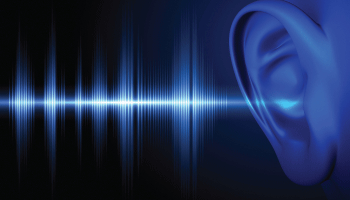Can You Hear Me?
Tim Turney, at occupational hygiene and environmental expert Casella, shares expert advice on hearing protection in the workplace. Noise-induced hearing...
Read Full Article
Noise-induced hearing loss is preventable. The effect is permanent. The result can be life-changing injuries that can seriously impair a worker’s quality of life. What can you do to protect your workers?
Employees with hearing loss are also at risk of additional injuries should they struggle to hear alarms, moving vehicles, emergency broadcasts or other hazards.
The repercussions to the employer if they do not seriously consider the auditory welfare of their workforce can be significant. The HSE has very defined procedures to protect hearing and defined measures to impose penalties on those employers who fail to take the correct precautions.
Precautions
Precautions range from monitoring and measuring noise, doing everything practicable to reduce noise, ensuring there is no over-exposure when it is difficult to mitigate noise, supplying appropriate ear defenders and conducting regular hearing monitoring.
Most manufacturers will be aware of what is required but they do have to continuously review their practices and assess if they can do better, particularly in the reduce noise category.
The level at which employers must provide hearing protection is 85 decibels dB(A) daily or weekly average exposure. However, at 80 dB(A), employers are legally obliged to assess the risk to workers and provide them with information and training.
Identifying workers most at risk
Any sound over 85 dB (A) can damage hearing. A noise survey can help employers determine which employees are at risk. Hearing protection should be made available to employees exposed to noise levels above 85dB(A). For each increase of 5dB in noise levels, the duration of the exposure should be cut in half.
Monitoring
Noise monitoring provides accurate insights into the noise levels of a working environment so that businesses can identify at-risk employees and ensure they adhere to regulations. However, professionals undertaking the monitoring should be trained and prepared sufficiently with the right equipment as minor errors in noise level estimates can lead to major errors in exposure calculations.
Assessment tools
Two pieces of equipment that can be used for the assessment are the sound level meter, primarily designed as a hand-held device used by an operator; and the noise dosimeter, which a staff member wears for their working shift. A sound level meter is an ideal solution for measuring the overall noise level. Dosimeters are best for personal noise measurements where it is difficult or unsafe to get close to employees with a sound-level meter. Dosimeters are smaller and body mounted. For example, a dosimeter would be ideal for workers exposed to many different noise levels and irregular working patterns.
Selecting hearing protection
When selecting hearing protection, the attenuation level is critical and noise levels at the ear must be reduced so that exposure is below 85dB(A) (or preferably below 80dB(A)). Making sure people wear the protector for the entirety of their shift is essential to ensure real-world protection. Employers can take a proactive approach to encourage all-day wear by considering comfort, communication, the environment, the individual, and the relationship with other personal protective equipment (PPE).
Comfort and fit
Removing PPE, even for short periods, has a significant effect on exposure. Therefore, to increase worker acceptance, it is crucial that hearing protection is comfortable. Employers should avoid a ‘one size fits all’ approach to hearing protection because the shape and size of the ear canal varies from person to person. A protector that fits well for one employee may overprotect some workers or be uncomfortable for others. It is best to have a suitable selection of hearing protection available.
Wellbeing
Communication can be a major issue with PPE because the process of reducing sound, known as attenuation, can pose risks to worker health. If a protector with too little attenuation is used, then employees will not receive enough protection. However, too much noise reduction can create feelings of isolation, and an employee may need to remove their PPE to communicate. In addition, over-attenuation can cut out safety warnings such as fire alarms or sirens from reversing vehicles. As a rule of thumb, businesses can avoid over-protecting workers by ensuring the level of exposure is not reduced to a level below 75dB(A).
Picture: The effect of noise-induced hearing loss is permanent. Good employers take preventive measures to safeguard their employees.
www.hse.gov.uk/noise/calculator.htm
Article written by Cathryn Ellis
04th January 2023